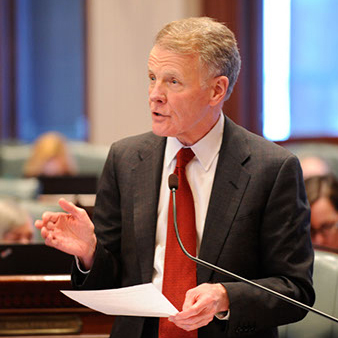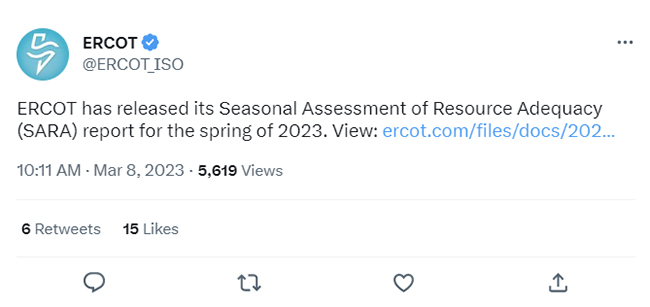Details of New York’s third round of offshore wind proposals suggest a potentially significant role for General Electric (NYSE:GE) in the supply chain that the state hopes to host for the new industry.
New York aims to have at least 9 MW of offshore wind in service by 2035, and there is talk of kicking the goal significantly higher.
Along with clean energy, officials want the derive an economic boost and social change from the projects; this latest offshore wind solicitation stipulated that proposals detail the efforts developers would take to encourage formation of ecosystems to build wind power components and grow a workforce.
After the solicitation closed, GE said that if enough orders arose, it would build two factories — one for turbine nacelles, and one for blades — in an area of upstate New York that is shaping up as a potential center of manufacturing and fabrication for offshore projects.
Competitor Siemens Gamesa said it would build a turbine nacelle factory nearby, again conditioned on it receiving orders for its products for use in New York waters.
Vestas is also in the mix, potentially building a blade factory in the same area as other proposed facilities. All would sit on the Hudson River, more than 100 miles from the ocean but easily accessible with barges or even deep-draft vessels.
Extensive documentation posted recently by the New York State Energy Research and Development Authority shows that all six developers submitting proposals in the 2022 OSW solicitation would rely on GE as potential suppliers. The thousands of pages of information are redacted to varying degrees.
Attentive Energy One, a joint venture of TotalEnergies (NYSE:TTE) and Rise Light & Power, would be a 1,404-MW wind farm with 1,310 MW of net delivery to the point of interconnection. The proposal emphasizes two priorities for New York — environmental justice and just transition — by highlighting its plan to land power cables at an aging fossil-fired power plant in New York City. The proposal states that current workers at the plant would keep their jobs, fewer nearby residents would develop asthma, and there would be little opposition to landing the power lines there. The total economic benefit to the state is pegged at $25.6 billion over 25 years.
Sunrise Wind 2 would be a joint venture of Orsted and Eversource Energy (NYSE:ES), which opted to keep such details as nameplate capacity secret in the public version of their 1,381-page proposal. But the unredacted passages emphasize their experience alone — Orsted as the largest OSW developer in the world, Eversource as the largest energy provider in New England — and together, including ongoing construction of South Fork Wind and development of Sunrise Wind 1, both off the New York coast. It is not clear if they mention that Eversource is actively attempting to sell its stake in the partnership, or that Orsted expects a significant cost impairment on Sunrise 1, because of escalating costs.
Beacon Wind 2 would be developed by Equinor (NYSE:EQNR) and bp (NYSE:BP), which already are developing Empire Wind and Beacon Wind 1. Few details are offered publicly about Beacon Wind 2, except that they would partner with GE on nacelle and blade manufacture, and with another firm on manufacture of high-voltage underwater cable, also in New York. In a January news release, the partners said Beacon 2 would generate 1.36 GW of electricity and more than $11 billion in economic activity.
Community Offshore Wind, proposed by RWE and National Grid Ventures, could be built in 1.3- or 2.6-GW configurations with a variety of price points. They propose collaboration with GE in the Albany area and creation of an offshore steel hub at a site along the Hudson between the Atlantic Ocean and Albany. The two tout their $1 billion-plus investment to date in clean energy in New York, including RWE’s onshore wind farms upstate. They note RWE’s status as the No. 2 offshore wind developer in the world, and the century-plus history in New York of some of National Grid’s operating companies.
Leading Light Wind is proposed by Invenergy as lead developer and energyRe as co-developer. In what is perhaps the least redacted of the proposals, they offer 1.32- and 2.1-GW proposals, with an optional energy storage component. They highlight their status as the only American-led project in the New York Bight; as developer of Clean Path NY, the HVDC line that is an important part of the state’s energy transition strategy; and Invenergy’s track record of over 890 MW of solar, wind and storage in the state. They say the project would provide up to $13.3 billion in economic benefits for the state and include a stakeholder outreach process guided by “humility, creativity and connectivity.”
Excelsior Wind, Liberty Wind North and Liberty Wind South are proposed by Vineyard Offshore. Its proposal is perhaps the most redacted of the six developers’ material, with minimal information made public. Vineyard would partner with GE on blades and nacelles for the projects and with some other entity on cable manufacturing. A January news release by Vineyard said the plan would produce 2.6 GW of electricity and more than $15 billion in economic benefits. Vineyard is a partner in the Vineyard Wind 1 project being built off Massachusetts.


